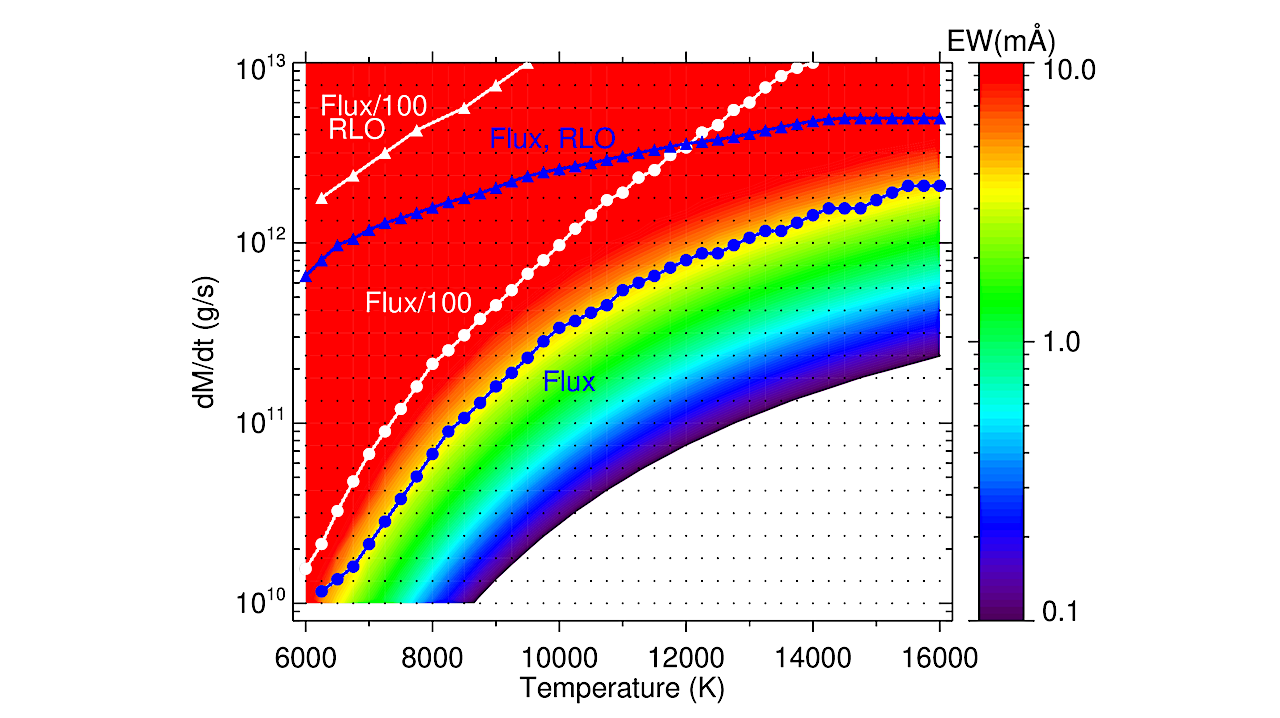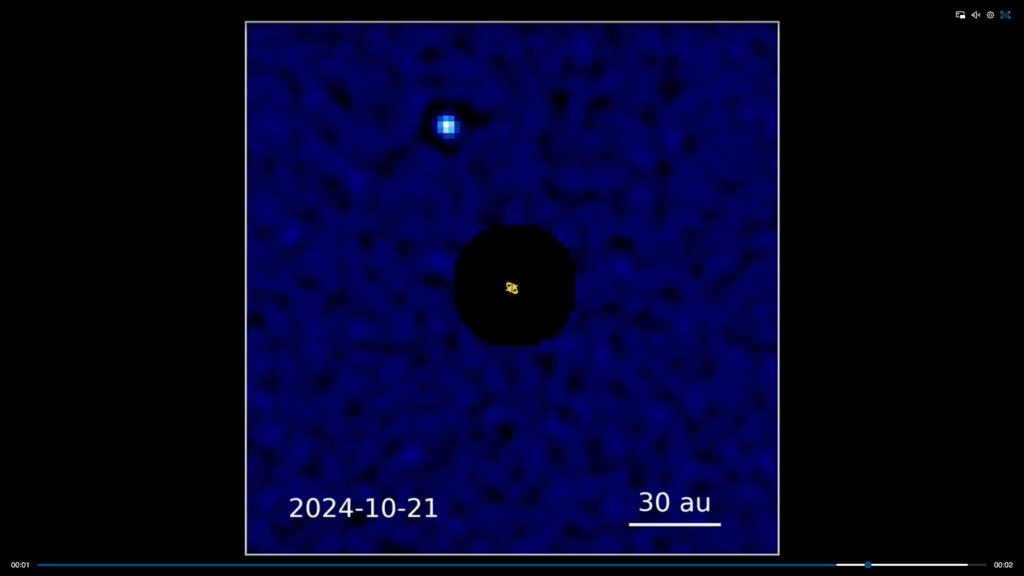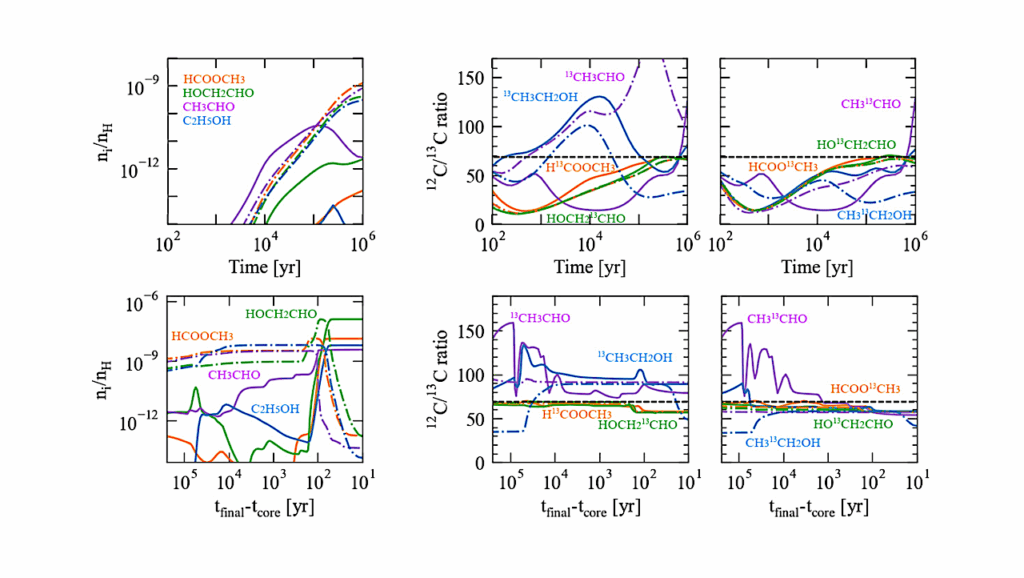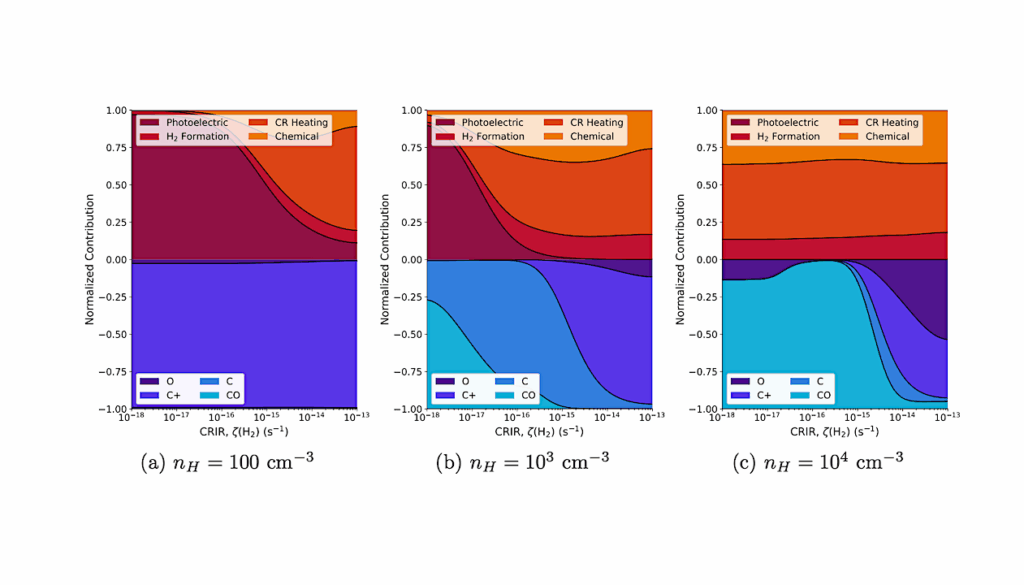The Elusive Atmosphere Of WASP-12 b / High-resolution Transmission Spectroscopy With CARMENES

To date, the hot Jupiter WASP-12 b has been the only planet with confirmed orbital decay. The late F-type host star has been hypothesized to be surrounded by a large structure of circumstellar material evaporated from the planet.
We obtained two high-resolution spectral transit time series with CARMENES and extensively searched for absorption signals by the atomic species Na, H, Ca, and He using transmission spectroscopy, thereby covering the He I triplet with high resolution for the first time.
This video shows the weather patterns on the exoplanet WASP-121 b, also known as Tylos. This video has been slowed down to show the patterns in the exoplanet’s atmosphere in more detail.
We apply SYSREM for atomic line transmission spectroscopy, introduce the technique of signal protection to improve the results for individual absorption lines, and compare the outcomes to those of established methods. No transmission signals were detected and the most stringent upper limits as of yet were derived for the individual indicators. Nonetheless, we found variation in the stellar Halpha and He I lines, the origin of which remains uncertain but is unlikely to be activity.
To constrain the enigmatic activity state of WASP-12, we analyzed XMM-Newton X-ray data and found the star to be moderately active at most. We deduced an upper limit for the X-ray luminosity and the irradiating X-ray and extreme ultraviolet (XUV) flux of WASP-12 b. Based on the XUV flux upper limit and the lack of the He I signal, our hydrodynamic models slightly favor a moderately irradiated planet with a thermospheric temperature of <= 12,000 K, and a conservative upper limit of <= 4e12 g/s on the mass-loss rate.
Our study does not provide evidence for an extended planetary atmosphere or absorption by circumstellar material close to the planetary orbit.
This video shows the temperature forecast spanning 130 exoplanet-days, across sunrise, noon, sunset and midnight, for the exoplanet WASP-121 b, also known as Tylos.The brighter yellow regions depict areas on the day side of the exoplanet where the temperature soars well above 2000 Kelvins because of its close proximity to its host star, roughly 2.6% of the distance between Earth and the Sun. Owing to the extreme temperature difference between the day and night sides, astronomers suspect evaporated iron and other heavy metals escaping into the higher layers of atmosphere on the day side partially fall back onto lower layers, making it rain iron on the night side. Some of the heavy metals also escape the planet’s gravity from the upper atmosphere. It only takes WASP-121 b roughly 30 hours to complete an orbit around its star.
S. Czesla, M. Lampón, D. Cont, F. Lesjak, J. Orell-Miquel, J. Sanz-Forcada, E. Nagel, L. Nortmann, K. Molaverdikhani, M. López-Puertas, F. Yan, A. Quirrenbach, J. A. Caballero, E. Pallé, J. Aceituno, P. J. Amado, Th. Henning, S. Khalafinejad, D. Montes, A. Reiners, I. Ribas, A. Schweitzer
Comments: Accepted for publication in A&A
Subjects: Earth and Planetary Astrophysics (astro-ph.EP)
Cite as: arXiv:2401.02195 [astro-ph.EP] (or arXiv:2401.02195v1 [astro-ph.EP] for this version)
https://doi.org/10.48550/arXiv.2401.02195
Focus to learn more
Submission history
From: Stefan Czesla
[v1] Thu, 4 Jan 2024 10:59:30 UTC (2,459 KB)
https://arxiv.org/abs/2401.02195
Astrobiology,








